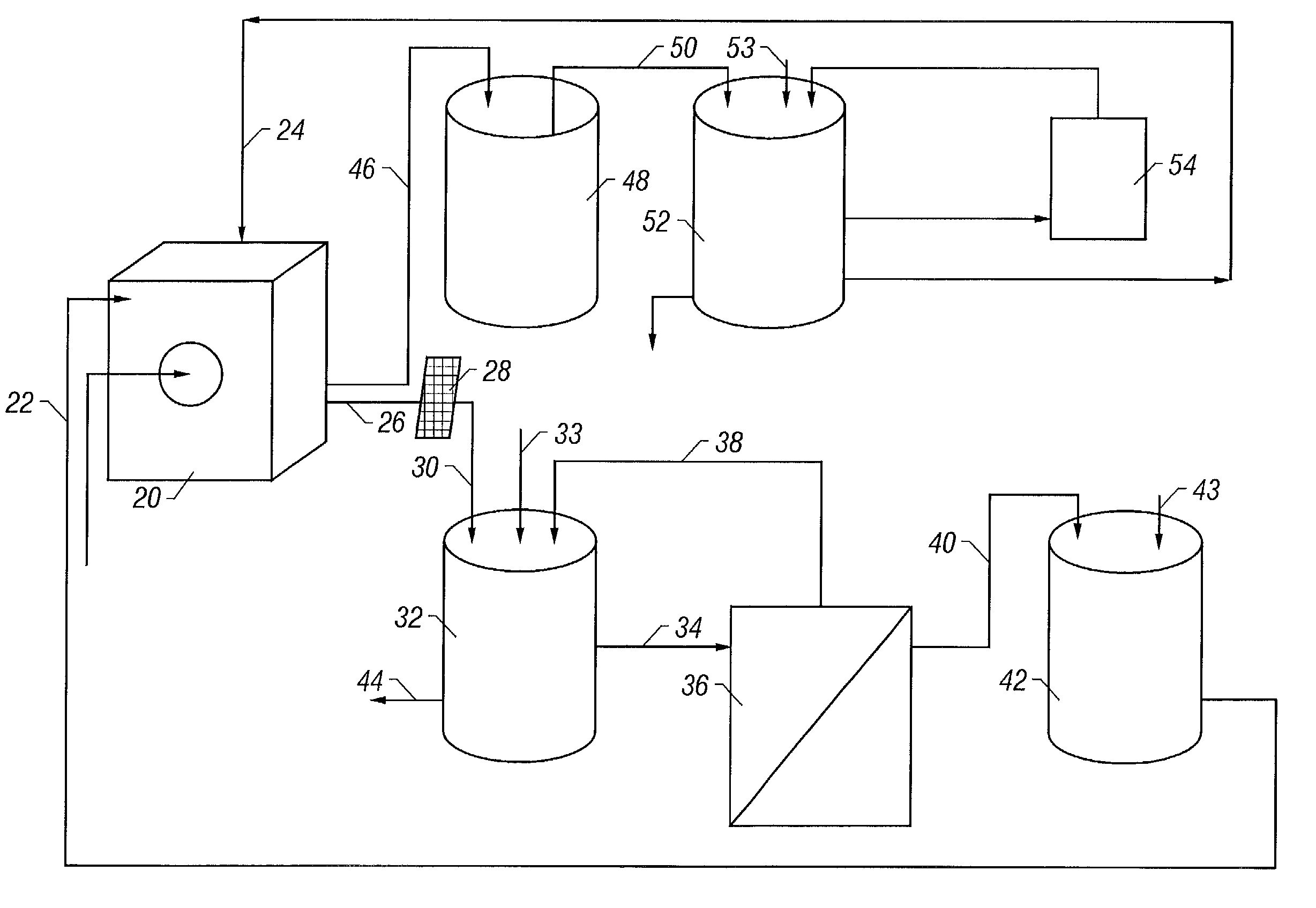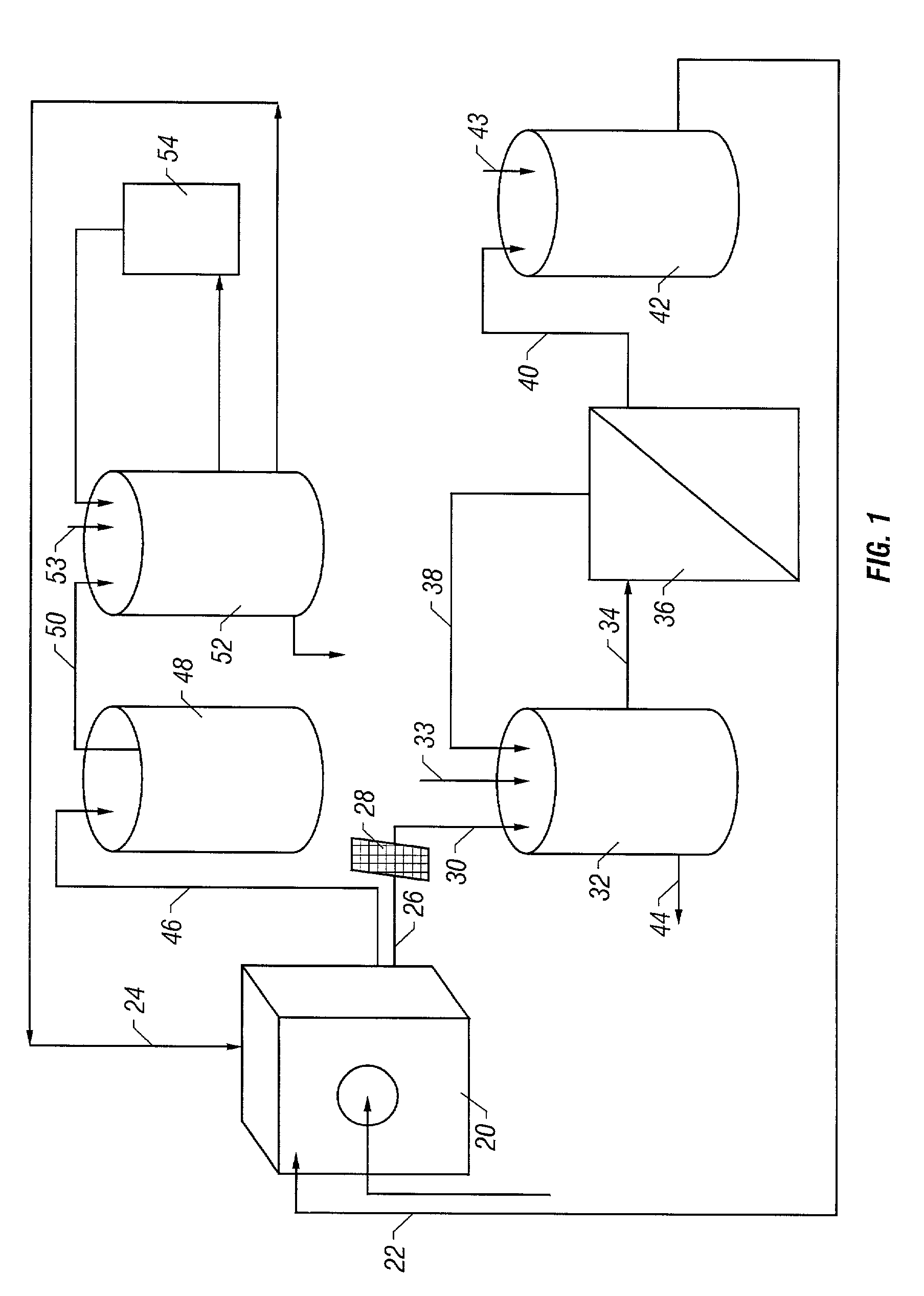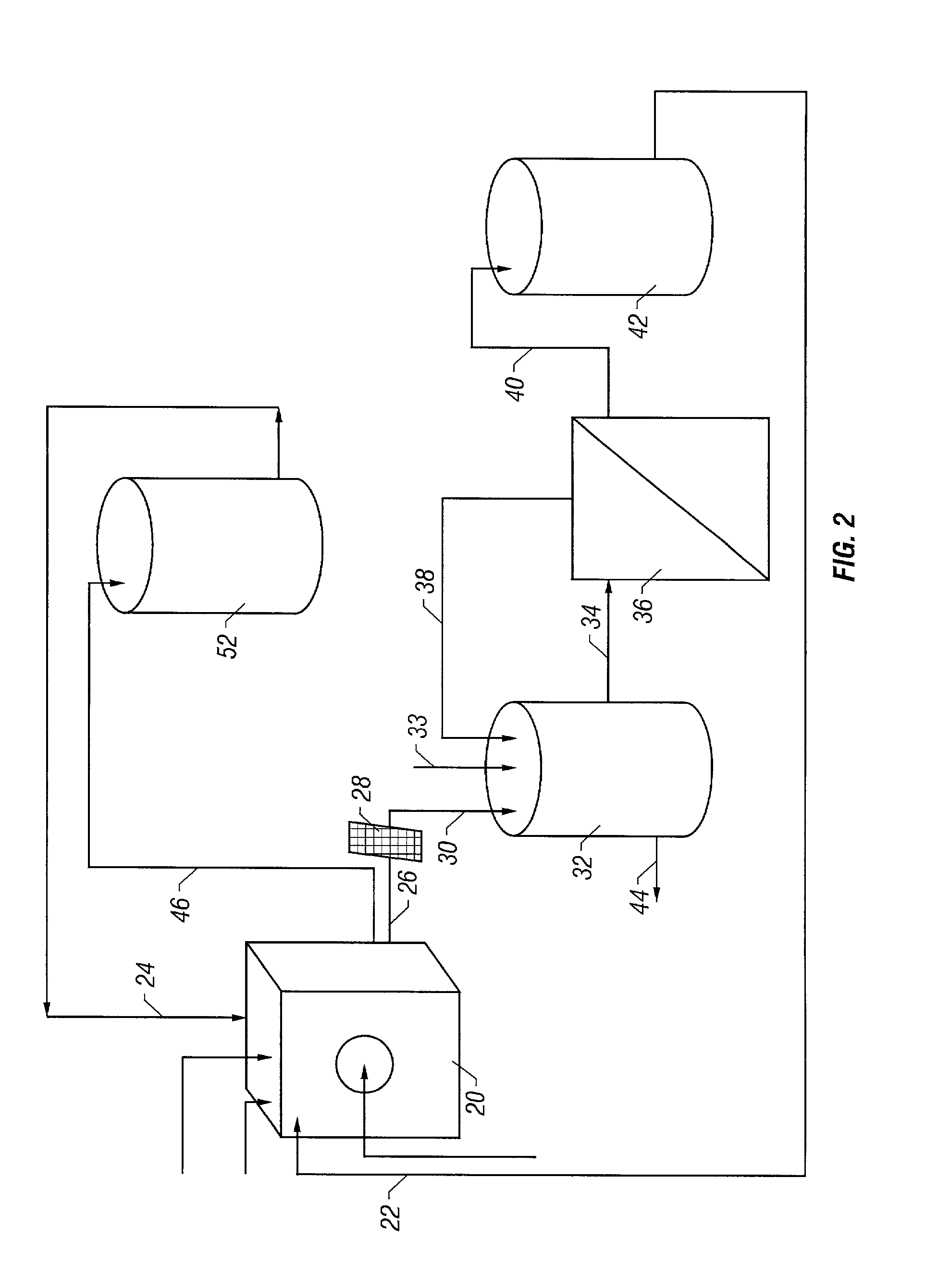System and method for economically viable and environmentally friendly central processing of home laundry
a technology for home laundry and processing, applied in the field of home laundry central processing, can solve the problems of generating gray water, devices, and lack of any form of recycling system, and achieve the effects of reducing the production of gray water, and increasing water recovery and chemical recovery
- Summary
- Abstract
- Description
- Claims
- Application Information
AI Technical Summary
Benefits of technology
Problems solved by technology
Method used
Image
Examples
example 1
[0080]A new consumer Kenmore™ compact wash vessel was used in the initial experiments. Only the wash water was treated and reused. The rinse cycle used fresh water. The wash water was microfiltered with a 0.1-micron pore size filter in a tubular membrane. The pore size treated was expected to remove particulate and emulsifier oily soil, as well as insoluble builders (zeolites), when present. A tubular membrane was resistant to fouling by particulate matter.
[0081]Standard test strips containing swatches of different soils were used to test cleaning ability. Redeposition swatches that were initially clean were used to test soils redepositing onto fabric. The reflectance of clothes before and after washing yields the measure of soil removal. This is the standard test in the industry.
[0082]A variety of measurements were made on the water at several points in the process to aid in understanding the fate of important chemicals originally present in the detergent. In order to simulate some...
example ii
[0101]Active matter titration was used to determine the anionic surfactant concentrations (both sulfonates and sulfates) of the experimental solutions as well as a blank. The surfactants were reacted with an aqueous solution of dye. About 20 ml of dimidium bromide / disulphine blue indicator (“DI”) stock solution, obtained from Gallard-Schlesinger Industries, Inc., was added to about 200 ml of distilled water in a one liter glass-stoppered mixing cylinder. About 3 ml of concentrated sulfuric acid mix was added and then diluted to one liter with distilled water and again mixed thoroughly. Reagent grade chloroform (Fisher Scientific) was added and the two-phase mixture was titrated with a standard aqueous solution of Hyamine 1622 (Benzethonium chloride, 98%, Lancaster synthesis).
[0102]Standard 0.0004 molar Hyamine solution was prepared by dissolving about 1.8 grams of Hyamine 1622 in distilled water and diluting to one liter. Using a 10-ml pipette, about 10 ml of sodium lauryl sulfate (...
example iii
[0123]Two 0.1 micron membranes (PEF 4172, area 0.17 m2) from Stork were used in these experiments. These membranes should produce a flux of 1000 L per m2 per hour (=2.8 L / min) for pure water at the operating pressure of about 100 KPa. Initial tap water flux for these membranes was determined to be about 1 L / min at 30 psig feed pressure when they were installed in the filtration system.
[0124]The first membrane was previously used for the treatment of wash water effluents from the wash vessel. Because of this, the first membrane was washed, treated with 100 ppm bleach, and back flushed with tap water. Four filtration experiments with the first membrane and two experiments with the second membrane were performed.
[0125]The second membrane had previously been used to filter the wash sequence with Liquid Tide™ detergent in soft water. The second membrane was not bleach treated or back flushed since it was a new membrane when the liquid Tide HE™ detergent in soft water was filtered. Howeve...
PUM
 Login to View More
Login to View More Abstract
Description
Claims
Application Information
 Login to View More
Login to View More - R&D
- Intellectual Property
- Life Sciences
- Materials
- Tech Scout
- Unparalleled Data Quality
- Higher Quality Content
- 60% Fewer Hallucinations
Browse by: Latest US Patents, China's latest patents, Technical Efficacy Thesaurus, Application Domain, Technology Topic, Popular Technical Reports.
© 2025 PatSnap. All rights reserved.Legal|Privacy policy|Modern Slavery Act Transparency Statement|Sitemap|About US| Contact US: help@patsnap.com



